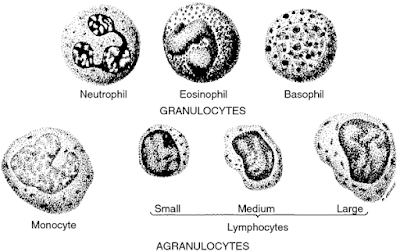Memo to readers
Hi everyone. Thank you for supporting me throughout the years. I so sorry that I did not update my blogs for several years due to some major events happened in my life. I will start transfer all the contents to a whole new blog called Student Study Notes.
I hope you will support me continuously and subscribe, follow my new blog Student Study Notes. This will motivate me to create quality contents to benefit every one of us. Thank you!
4th Feb 2021
Pages - Menu
Sunday, 25 October 2015
Saturday, 24 October 2015
SPM Biology 4 Chemical Composition of the Cell (Part 3)
Contents moved to a whole new blog called Student Study Notes.
I hope you will support me continuously and subscribe, follow my new blog Student Study Notes
I will be very happy if my notes are useful to you. Hope you will recommend my new blog to your friends so we study together throughout the years. Thank you!
Wednesday, 21 October 2015
SPM Biology 4 Chemical Composition of the Cell (Part 2)
Contents moved to a whole new blog called Student Study Notes.
I hope you will support me continuously and subscribe, follow my new blog Student Study Notes
I will be very happy if my notes are useful to you. Hope you will recommend my new blog to your friends so we study together throughout the years. Thank you!
Tuesday, 20 October 2015
SPM Biology 4 Chemical Composition of the Cell (Part 1)
Contents moved to a whole new blog called Student Study Notes.
I hope you will support me continuously and subscribe, follow my new blog Student Study Notes
I will be very happy if my notes are useful to you. Hope you will recommend my new blog to your friends so we study together throughout the years. Thank you!
Monday, 19 October 2015
STPM Biology Biological Molecules (Part 20)
Contents moved to a whole new blog called Student Study Notes.
I hope you will support me continuously and subscribe, follow my new blog Student Study Notes
I will be very happy if my notes are useful to you. Hope you will recommend my new blog to your friends so we study together throughout the years. Thank you!
Wednesday, 14 October 2015
STPM Biology Biological Molecules (Part 19)
Contents moved to a whole new blog called Student Study Notes.
I hope you will support me continuously and subscribe, follow my new blog Student Study Notes
I will be very happy if my notes are useful to you. Hope you will recommend my new blog to your friends so we study together throughout the years. Thank you!
Tuesday, 13 October 2015
STPM Biology Biological Molecules (Part 18)
Contents moved to a whole new blog called Student Study Notes.
I hope you will support me continuously and subscribe, follow my new blog Student Study Notes
I will be very happy if my notes are useful to you. Hope you will recommend my new blog to your friends so we study together throughout the years. Thank you!
Monday, 12 October 2015
STPM Biology Biological Molecules (Part 17)
Contents moved to a whole new blog called Student Study Notes.
I hope you will support me continuously and subscribe, follow my new blog Student Study Notes
I will be very happy if my notes are useful to you. Hope you will recommend my new blog to your friends so we study together throughout the years. Thank you!
Friday, 9 October 2015
SPM Biology 10 Transport (Part 7)
Thursday, 8 October 2015
SPM Biology 10 Transport (Part 6)
SPM Biology 10 Transport: Circulatory System
- Closed circulatory system
- Open circulatory system
- The blood is contained in blood vessels and flows continuously in blood vessels.
- Valves can be found to maintain the flow of blood in one direction only.
- This system is found in larger animals such as vertebrates.
- The blood is not contained in blood vessels and is pumped from the heart into the cavity or space around the body cells.
- This system is only found in smaller animals such as insects and shellfish.

Differences between open and closed circulatory system
 |
| Human circulation system |
- Pulmonary circulation (heart → lungs → heart)
- Systemic circulation (heart → all body tissues → heart)
- Deoxygenated blood is pumped out from the right ventricle into the pulmonary artery which transports the blood to left and right lungs.
- At the lungs, gaseous exchange occurs. The deoxygenated blood in the pulmonary artery receives oxygen and becomes oxygenated blood and is transported from the lungs to the left atrium of the heart by pulmonary vein.

Pulmonary circulation - The main function of pulmonary circulation: to change deoxygenated blood to oxygenated blood.
- Oxygenated blood from the lungs which enters the left atrium of the heart is pumped into the left ventricle and is then pumped out of the heart through the aorta.
- The aorta branches to form arteries which transport oxygenated blood to all the body tissues.
- Exchange of gases and nutrients occurs in the body cells of an organ.
- The blood that is transported out of the organ by the vein is deoxygenated blood.
- The blood from the veins in all body tissues is transported into the vena cava and then enters into the right atrium of the heart.

Systemic circulation - The main function of systemic circulation: to transport oxygenated blood from the heart to all the body tissues.

Pulmonary and Systemic Circulation
Wednesday, 7 October 2015
SPM Biology 10 Transport (Part 5)
SPM Biology 10 Transport: Functions of Haemolymph in Transport
 |
| Circulatory system of insect |
- In insects, the blood does not flow in closed blood vessels.
- Blood is pumped out of the heart to fill the spaces between the body cells.
- The blood of the insect which mixes with the tissue fluid around the body cells is called haemolymph.
- Exchange of materials between haemolymph and body cells occurs by simple diffusion.
- O₂ and CO₂ are not transported by haemolymph. They are transported through the tracheal system.
Tuesday, 6 October 2015
SPM Biology 10 Transport (Part 4)
SPM Biology 10 Transport: Platelet, Plasma and the Functions of Blood
- Digested food materials: glucose, amino acids, fatty acids, etc.
- Excretory products: urea, uric acid, etc.
- Mineral in the form of ions: calcium, sodium, potassium, etc. and vitamins.
- Dissolved gases.
- Plasma proteins such as albumin, globulin and fibrinogen.
- Hormones.
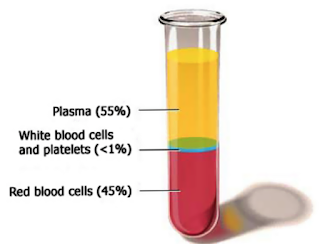 |
| Composition of blood |
- Blood transport oxygen in the form of oxyhaemoglobin.
- In the alveolus, the partial pressure of O₂ is higher than the partial pressure of O₂ in the blood capillary.
- Hence, O₂ diffuses out from the alveolus into the blood capillary around the alveolus by simple diffusion.
- In the blood, O₂ combines with haemoglobin in the erythrocyte to form oxyhaemoglobin.
- O₂ is transported in the form of oxyhaemoglobin to the body cells which lack of O₂.
- At the body cells, oxyhaemoglobin breaks down to release the O₂ to the body cells for cell respiration.

Formation of haemoglobin
- CO₂ is transported by the blood in 2 main forms: Ion bicarbonate and carbaminohaemoglobin.
- CO₂ is transported from the body cells to the lungs to be removed during exhalation.
- In the body cell, as a result of respiration which release CO₂, the partial pressure of CO₂ is higher then in the blood capillary.
- In the blood capillary, CO₂ dissolves in the blood plasma to form hydrogen carbonates ion and is transported in the blood plasma to the lungs.
- At the lungs, enzyme changes the hydrogen carbonate ion to CO₂ again.
- The CO₂ then diffuses out of the blood capillary into the alveolus to be removed during exhalation.
- CO₂ can also be transported in the form of carbaminohaemoglobin which is then transported in the erythrocyte to the lungs.
- At the alveolus, carbaminohaemoglobin breaks down to release the CO₂ which then diffuse into the alveolus to be expelled out during exhalation.
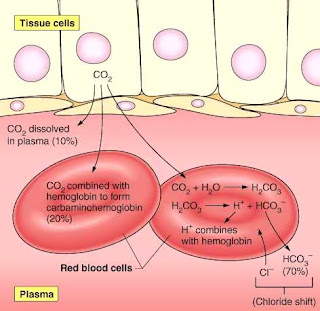
Transport of carbon dioxide
- Plasma transport digested food such as simple sugars, amino acids, fatty acids, glycerol, vitamins and dissolved minerals.
- Simple sugars, amino acids, minerals and vitamins B and C are absorbed into the blood capillaries in the villus of the ileum.
- These nutrients are then transported in the plasma from the ileum to the liver through the hepatic portal vein, then to the heart and subsequently to the whole body for usage or storage.
- Fatty acids, glycerol, vitamins A, D, E, K diffuse into the lacteal of the villus and are transported from the ileum to the lymphatic system, then back into the circulatory system through the left subclavian vein. The food materials are then transported in the plasma to the whole body.
- Nitrogenous wastes such as urea are by products of protein metabolism.
- Urea, uric acid. cretinine, bilirubin and ammonium ions are transported to the kidneys to be excreted.
- Endocrine glands secrete hormones into the bloodstream which are then transported by the plasma to the target organs.
- For example, the insulin hormone is transported by the blood plasma from the pancreas to liver where it acts.
- Heat is produce during cell respiration which occurs actively in the muscles and liver.
- The heat is distributed evenly throughout the whole body by the circulatory system.
- Excess heat can be removed by transporting it to the skin and the lungs by the blood so that the heat is dissipated.
- Water is universal solvent. It acts as a medium for all chemical reactions to take place in the body.
- The blood transports water to the whole body to regulate the equilibrium of water and osmotic pressure in the body.
Monday, 5 October 2015
STPM Biology Biological Molecules (Part 16)
Contents moved to a whole new blog called Student Study Notes.
I hope you will support me continuously and subscribe, follow my new blog Student Study Notes
I will be very happy if my notes are useful to you. Hope you will recommend my new blog to your friends so we study together throughout the years. Thank you!
Sunday, 4 October 2015
STPM Biology Biological Molecules (Part 15)
Contents moved to a whole new blog called Student Study Notes.
I hope you will support me continuously and subscribe, follow my new blog Student Study Notes
I will be very happy if my notes are useful to you. Hope you will recommend my new blog to your friends so we study together throughout the years. Thank you!
Saturday, 3 October 2015
STPM Biology Biological Molecules (Part 14)
Contents moved to a whole new blog called Student Study Notes.
I hope you will support me continuously and subscribe, follow my new blog Student Study Notes
I will be very happy if my notes are useful to you. Hope you will recommend my new blog to your friends so we study together throughout the years. Thank you!
Thursday, 1 October 2015
SPM Biology 10 Transport (Part 3)
SPM Biology 10 Transport - Leukocyte
Leukocyte (white blood cell)
1. Has a nucleus.
2. Has no fixed shape.
3. Larger size than erythrocyte.
4. The number of leukocytes in the blood is < than erythrocytes.
5. Function of leukocyte: to protect the body from diseases.
6. There are 2 types of leukocytes:
- Granulocyte
- Agranulocyte
- Neutrophil
- Eosinophil
- Basophil
- Lymphocytes
- Monocytes
Wednesday, 30 September 2015
SPM Biology 10 Transport (Part 2)
SPM Biology 10 Transport - Erythrocyte
- Blood
- Blood vessels
- Heart
- 55% plasma
- 45% blood cells
- Erythrocytes (red blood cell)
- Leukocytes (white blood cell)
- Platelets
 |
| Blood composition |
 |
| Erythrocyte (red blood cell) |
- Increases the TSA/V ratio to facilitate the exchange of gases by diffusion across the membrane.
- Enables the erythrocyte to change its shape, so that it an squeeze through the narrow blood capillary.
- Enables the erythrocyte to contain more haemoglobin to carry more oxygen.
- transport oxygen (oxyhaemoglobin)
- transport carbon dioxide (carbaminohaemoglobin)
Tuesday, 29 September 2015
SPM Biology 10 Transport (Part 1)
SPM Biology 10 Transport
 |
| Transport system of human |
- Small in size.
- Have a large total surface area to volume (TSA/V) ratio.
 |
| Surface-to-volume ratio |
- Large body size.
- Have a small TSA/V ratio.
- The amount of cell requirements and metabolic waster products increases.
- The cells are located further in the body.
- to transport the nutrients to all the body cells.
- to remove the metabolic waster products from the body cells.
Sunday, 27 September 2015
STPM Biology Biological Molecules (Part 13)
Contents moved to a whole new blog called Student Study Notes.
I hope you will support me continuously and subscribe, follow my new blog Student Study Notes
I will be very happy if my notes are useful to you. Hope you will recommend my new blog to your friends so we study together throughout the years. Thank you!
Saturday, 26 September 2015
STPM Biology Biological Molecules (Part 12)
Contents moved to a whole new blog called Student Study Notes.
I hope you will support me continuously and subscribe, follow my new blog Student Study Notes
I will be very happy if my notes are useful to you. Hope you will recommend my new blog to your friends so we study together throughout the years. Thank you!
Friday, 25 September 2015
STPM Biology Biological Molecules (Part 11)
Contents moved to a whole new blog called Student Study Notes.
I hope you will support me continuously and subscribe, follow my new blog Student Study Notes
I will be very happy if my notes are useful to you. Hope you will recommend my new blog to your friends so we study together throughout the years. Thank you!
Thursday, 24 September 2015
STPM Biology Biological Molecules (Part 10)
Contents moved to a whole new blog called Student Study Notes.
I hope you will support me continuously and subscribe, follow my new blog Student Study Notes
I will be very happy if my notes are useful to you. Hope you will recommend my new blog to your friends so we study together throughout the years. Thank you!
Wednesday, 23 September 2015
STPM Biology Biological Molecules (Part 9)
Contents moved to a whole new blog called Student Study Notes.
I hope you will support me continuously and subscribe, follow my new blog Student Study Notes
I will be very happy if my notes are useful to you. Hope you will recommend my new blog to your friends so we study together throughout the years. Thank you!
Sunday, 20 September 2015
SPM Biology 3 Movement of Substances Across the Plasma Membrane (Part 3)
Contents moved to a whole new blog called Student Study Notes.
I hope you will support me continuously and subscribe, follow my new blog Student Study Notes
I will be very happy if my notes are useful to you. Hope you will recommend my new blog to your friends so we study together throughout the years. Thank you!
Saturday, 19 September 2015
STPM Biology Biological Molecules (Part 8)
Contents moved to a whole new blog called Student Study Notes.
I hope you will support me continuously and subscribe, follow my new blog Student Study Notes
I will be very happy if my notes are useful to you. Hope you will recommend my new blog to your friends so we study together throughout the years. Thank you!
Friday, 18 September 2015
STPM Biology Biological Molecules (Part 7)
Contents moved to a whole new blog called Student Study Notes.
I hope you will support me continuously and subscribe, follow my new blog Student Study Notes
I will be very happy if my notes are useful to you. Hope you will recommend my new blog to your friends so we study together throughout the years. Thank you!
Thursday, 17 September 2015
SPM Biology 3 Movement of Substances Across the Plasma Membrane (Part 2)
Contents moved to a whole new blog called Student Study Notes.
I hope you will support me continuously and subscribe, follow my new blog Student Study Notes
I will be very happy if my notes are useful to you. Hope you will recommend my new blog to your friends so we study together throughout the years. Thank you!
Wednesday, 16 September 2015
SPM Biology 3 Movement of Substances Across the Plasma Membrane (Part 1)
Contents moved to a whole new blog called Student Study Notes.
I hope you will support me continuously and subscribe, follow my new blog Student Study Notes
I will be very happy if my notes are useful to you. Hope you will recommend my new blog to your friends so we study together throughout the years. Thank you!
Tuesday, 15 September 2015
STPM Biology Biological Molecules (Part 6)
Contents moved to a whole new blog called Student Study Notes.
I hope you will support me continuously and subscribe, follow my new blog Student Study Notes
I will be very happy if my notes are useful to you. Hope you will recommend my new blog to your friends so we study together throughout the years. Thank you!
Monday, 14 September 2015
STPM Biology Biological Molecules (Part 5)
Contents moved to a whole new blog called Student Study Notes.
I hope you will support me continuously and subscribe, follow my new blog Student Study Notes
I will be very happy if my notes are useful to you. Hope you will recommend my new blog to your friends so we study together throughout the years. Thank you!
Sunday, 13 September 2015
STPM Biology Biological Molecules (Part 4)
Contents moved to a whole new blog called Student Study Notes.
I hope you will support me continuously and subscribe, follow my new blog Student Study Notes
I will be very happy if my notes are useful to you. Hope you will recommend my new blog to your friends so we study together throughout the years. Thank you!
Saturday, 12 September 2015
STPM Biology Biological Molecules (Part 3)
Contents moved to a whole new blog called Student Study Notes.
I hope you will support me continuously and subscribe, follow my new blog Student Study Notes
I will be very happy if my notes are useful to you. Hope you will recommend my new blog to your friends so we study together throughout the years. Thank you!
Tuesday, 8 September 2015
SPM Biology 15 Variation (Part 2)
SPM Biology 15 Variation (Part 2)
Mutation
- sickle cell anemia (mutation to gene that causes red blood cells to become sickle-shaped).
- albinism (mutation to gene that control the production of melanin pigment).
- haemophilia.
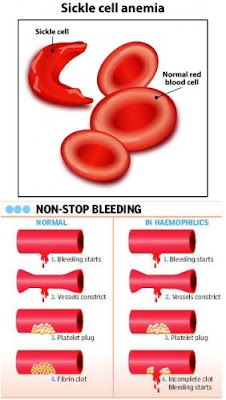 |
| Gene mutation |
 |
| Chromosomal Mutation |
Mutagens are the substances that can also cause the mutation or increase the rate of mutation. For instance:
- x-ray
- ultraviolet radiation
- chemical substances such as nitrous acid, formaldehyde, food preservatives, pesticides, drugs and some components in cigarette smoke.
Monday, 7 September 2015
SPM Biology 15 Variation (Part 1)
SPM Biology 15 Variation (Part 1)
 |
| Variation |
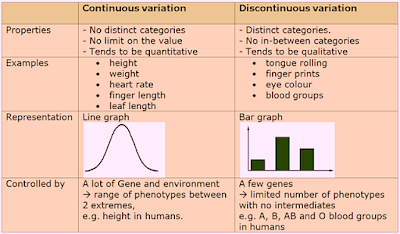 |
| Comparison between Continuous and Discontinuous Variation |
What are the factors that cause variation?
1. Environmental Factors |
| Environmental factors |
 |
| Homologous chromosomes |
 |
| Variation |
Sunday, 6 September 2015
Free Online Korean Language Learning (Part 4)
Learn Korean
 |
| Source: Korea Tourism Organization |
Beginner
 |
| Source: Korea Tourism Organization |
Intermediate
 |
| Source: Korea Tourism Organization |



